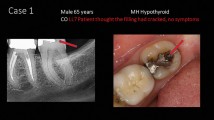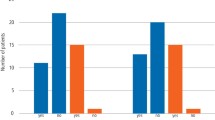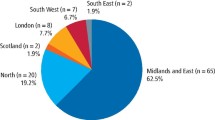Key Points
-
Stresses the importance of testing the validity and reliability of patient survey instruments so that dental teams can be confident that their results can accurately inform their quality development
-
Explains straightforward methods which can be used to assess the validity and reliability of patient survey instruments.
Abstract
Aim To consider the extent to which the validity and reliability of the Denplan Excel Patient Survey (DEPS) has been confirmed during its development and by its use in general dental practice and to explore methods by which any survey instrument used in general dental practice might be validated and tested for reliability.
Methods DEPS seeks to measure perceived practice performance on those issues considered to be of greatest importance to patients. Content validity was developed by a literature review and tested in a pilot study. Criterion validity was tested by comparing patient retention in a payment plan for practices achieving the highest DEPS scores with those attaining the lowest scores over a two year period (surveys completed between 2010 and 2012). Reliability was assessed using the test/re-test method for 23 practices with approximately a three year time interval between tests. Internal consistency was tested by comparing Net Promoter Scores (NPS – which is measured in DEPS) attained by practices with their Patient Perception Index (PPI) as measured by the ten core questions in DEPS.
Results Practices in the pilot study strongly endorsed the content validity of DEPS. The 12 practices with the highest scores in the DEPS slightly increased their number of patients registered in Denplan payment plans during a two year period. The 12 lowest scoring practices saw 7% of their patients de-register during the same period. The 23 practices selected for the test/re-test study averaged more than 250 responses for both the test and re-test phases. The magnitude and pattern of their results were similar in both phases, while, on average, a modest improvement in results was observed. Internal consistency was confirmed as NPS results in DEPS closely mapped PPI results. The higher the measurement of perceived quality (PPI) the more likely patients were to recommend the practice (NPS).
Conclusion Both through its development and use over the last four years The DEPS has demonstrated good validity and reliability. The authors conclude that this level of validity and reliability is adequate for the clinical/general care audit purpose of DEPS and that it is therefore likely to reliably inform practices where further development are indicated. It is important and quite straightforward to both validate and check the reliability of patient surveys used in general dental practice so that dental teams can be confident in the instrument they are using.
Similar content being viewed by others
Log in or create a free account to read this content
Gain free access to this article, as well as selected content from this journal and more on nature.com
or
References
Sykes J B . The Concise Oxford Dictionary. 6th ed. Oxford: Oxford University Press, 1976.
Walonick D . Survival Statistics Edition. 6th ed. StatPac Incorporated, 2013.
Mertens D . Research and Evaluation in Education and Psychology. Sage, 2015.
Busby M C, Burke F J T, Matthews R, Cytra J and Mullins A . The development of a concise questionnaire designed to measure perceived outcomes on the issues of greatest importance to patients. Br Dent J 2012; 212: 382–383.
Busby MC . Measuring success in dental practice using patient feedback. Birmingham: University of Birmingham, 2011. Available online at http://etheses.bham.ac.uk/1288/1/Busby_MPhil_11.pdf (accessed September 2015)
Busby M C, Matthews R, Burke, F J T, Mullins A and Shumacher K . Is any particular aspect of perceived quality associated with patients tending to promote a dental practice to their friends and colleagues? Br Dent J 2015; 218: 346–347.
Reichheld F . The Ultimate Question. Boston: Harvard Business School Publishing Corporation, 2006.
Chisholm A, Askham J . What do you think of your doctor? A Review of questionnaires for gathering patients' feedback on their doctor. Oxford: Picker Institute Europe, 2006.
Lucarotti P S K, Burke F J T . Factors influencing patients' continuing attendance at a given dentist. Br Dent J 2015; 218: 348–349.
Busby M C, Burke F J T, Matthews R, Cytra J, Mullins A . Can a concise, benchmarked patient survey help to stimulate improvements in perceived quality of care? Dent Update 2014; 41: 816–822.
Denplan Excel and DEPPA. Available online at http://www.denplan.co.uk/dentists/denplan-excel (accessed October 2015)
Author information
Authors and Affiliations
Corresponding author
Additional information
Refereed Paper
Rights and permissions
About this article
Cite this article
Busby, M., Matthews, R., Burke, F. et al. Long-term validity and reliability of a patient survey instrument designed for general dental practice. Br Dent J 219, 337–342 (2015). https://doi.org/10.1038/sj.bdj.2015.749
Accepted:
Published:
Issue date:
DOI: https://doi.org/10.1038/sj.bdj.2015.749



